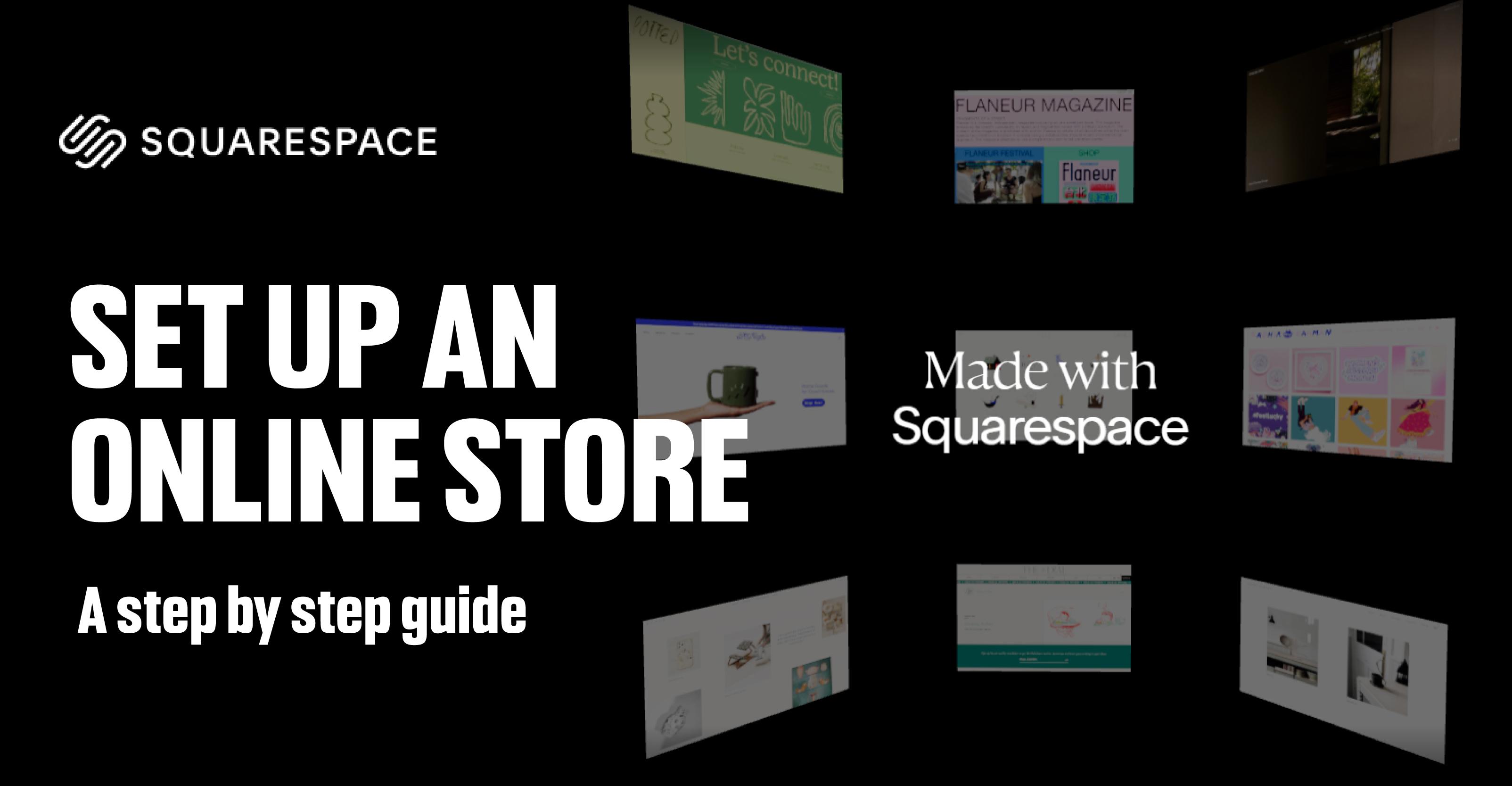
Guide to Set Up an Online Store with Squarespace
Oct 11 2025
Launching your online store doesn’t have to be complicated, especially when you’re using Squarespace, one of the most beginner-friendly website builders out there. Whether you’re selling handmade products, digital downloads, or services, Squarespace gives you everything you need to create a professional eCommerce website without the need to code.
Let’s deep dive into this step-by-step guide and understand how to set up an online store with Squarespace, from choosing the right template to optimising the complete website.
Step 1: Choose the Right Squarespace Plan
The first step before building a website is to select the right subscription plan. Squarespace offers multiple plans, but for an online store, you’ll need Business, Basic Commerce, or Advanced Commerce.
Business Plan: Best for beginners testing eCommerce, and comes with a 3% transaction fee.
Basic Commerce: No transaction fee, advanced eCommerce tools, and product analytics.
Advanced Commerce: Abandoned cart recovery, subscriptions, and advanced discounts.
Squarespace Plans | Annual Price | Special Description |
Personal Plan | $16/Month | Free custom domain,Mobile optimised,template designs |
Business Plan | $23/Month | Sell products and servicesCheckout on your domainAdvanced website analytics |
Commerce Plan (Basic) | $28/Month | Powerful merchandising0% transaction fee on online store transactions0% transaction fee on invoices |
Commerce Plan (Advanced) | $52/Month | Advanced discounting Sell subscriptions |
Pro Tip: If you’re serious about scaling your store, go for the Basic Commerce plan to avoid transaction fees and unlock better features.
Read: Choose the Exact Sqaurespace Plan Your Business
Step 2: Pick a Template That Matches Your Brand
Squarespace templates are one of its biggest strengths. Choose a design that matches your niche whether it’s fashion, lifestyle, tech gadgets, or handmade crafts.
Best eCommerce templates on Squarespace:
Brine – Flexible layout and powerful features
Mojave – Clean, product-focused design
Rally – Best for fashion and visual storytelling
SEO Tip: Choose a clean, fast-loading template to improve page speed and ranking on Google.
Step 3: Add and Organise Your Products
The next step after picking up the template is to upload your first product from the catalog. Go to Pages → Store Page → Add Product.
You can sell all kinds of products ranging from physical products, which comprise clothes, home decor items, and more. You can also download digital libraries of books and courses and various services like photography or consulting.
What you need to focus on after listing your product is the details. For each of the products, you should follow these steps:
Add a clear title and description (use relevant keywords naturally)
Upload high-quality images (minimum 1500px width)
Set pricing, SKU, and inventory
Add product categories and tags for better navigation
Pro Tip: Use descriptive, SEO-friendly product titles like “Minimalist Gold Necklace for Women | Handmade Jewellery” instead of generic ones.
Step 4: Set Up Payment and Shipping Options
A seamless checkout experience builds trust and improves conversions.
Payments:
Squarespace integrates directly with multiple payment gateways like Stripe, PayPal, and Apple Pay. You can use Afterpay to make payments in instalments. You can set your preferred currency and tax rates under Settings → Payments.
Shipping:
Squarespace lets you set up shipping methods through 3 ways.
Flat rate shipping
Free shipping
Weight-based or region-based pricing
Pro Tip: Offer free shipping for higher cart values to encourage larger orders.
Step 5: Customise Your Checkout & Policies
A professional online store must have clear policies and an optimized checkout flow.
Go to: Settings → Checkout → Customize
Add: Return & refund policy, Shipping policy, Privacy policy, & Terms of service
These build customer trust and ensure transparency. Also, consider adding a one-page checkout to reduce cart abandonment.
Expert Tip: Use your brand keywords (like “Buy handmade candles on Squarespace store”) in the checkout confirmation page meta description.
Step 6: Optimize Your Store for SEO
To attract organic traffic, you need to optimize your Squarespace store for search engines.
Key SEO optimizations:
Always use search intent and high search volume titles and meta descriptions
Add ALT text to all the images
Create SEO-friendly URLs without using special characters
Enable SSL (HTTPS) for security and ranking boost
Write product descriptions that include search intent-based keywords
Step 7: Enable Marketing & Analytics Tools
Squarespace comes with built-in marketing tools to grow your store.
Email Campaigns: Create email newsletters for product launches or discounts directly from Squarespace.
Abandoned Cart Recovery (Advanced Plan): Automatically remind customers who didn’t complete checkout.
Social Integration: Connect Instagram and Facebook to sync products and reach new customers.
Analytics: Use Squarespace Analytics to track traffic, conversion rates, and best-selling products.
Pro Tip: Monitor analytics weekly to see what’s driving the most sales and optimize accordingly.
Step 8: Test and Launch Your Store
It’s always better to test the website before taking it live. Run it like a real customer would use it:
Add products to cart
Check payment gateways
Review mobile responsiveness
Confirm emails and checkout process
Once everything runs smoothly, hit Publish, and your Squarespace online store is live.
Technical SEO Tip: Submit your website to Google Search Console and Bing Webmaster Tools for faster indexing.
Also Read: Hostinger Cloud and VPS Hosting
Final Thoughts
Setting up an online store on Squarespace is simpler than you might think. The website t’s an all-in-one solution that lets you design, sell, and grow under one platform. From stunning templates to secure payments and SEO tools, Squarespace is ideal for small businesses and entrepreneurs ready to make their mark online.
If you follow these steps, you’ll have a fully optimised Squarespace store that not only looks professional but also converts visitors into loyal customers.